Millions of children attend school every day. But everyone learns differently, and schools vary across times and places. So, are schools really the best places to learn? Let's explore further…
Is school | the best place to learn?
Is school the best place to learn?
Why do we have to go to school, anyway?
Ever felt like not going to school, and wondered why you have to? Well, strictly speaking, in the UK, you don’t. You can be home-schooled, for example. But you do have to get an education - and generally, it’s been accepted that going to school is the ‘best’ way to do that. Oxford's Professor Iram Siraj (Department of Education) explores the purpose of what's taught in UK schools...
The word ‘school’ comes from the Greek 'skhole', meaning leisure or free time -- a break from working to engage in debate. And 'pedagogue' (another word for a teacher) means a child-guide. In Ancient Greece, this was typically a family’s slave whose job it was to escort boys to school and supervise them.
Throughout the ages, in the UK and Europe, the teacher has shifted from being a local religious figure to a trained professional. In the past, religious institutions tended to be the only places offering an ‘education’ and so lessons often focused on morality and studying religious scriptures. The space of the classroom has also changed over time, from children of all ages running around in the same room with no specific instruction to parallel teaching (where two teachers support a class), to the model we know today which is still essentially teacher-fronted and in rows. That said, some schools are moving towards more student-centred ways of teaching and group/project-based learning.
So who picks what you learn in school?
Nowadays, these kinds of decisions tend to be made partly by your school and your teachers (who determine some of the specifics such as the books you study) and partly by the government, which decides overall on the subjects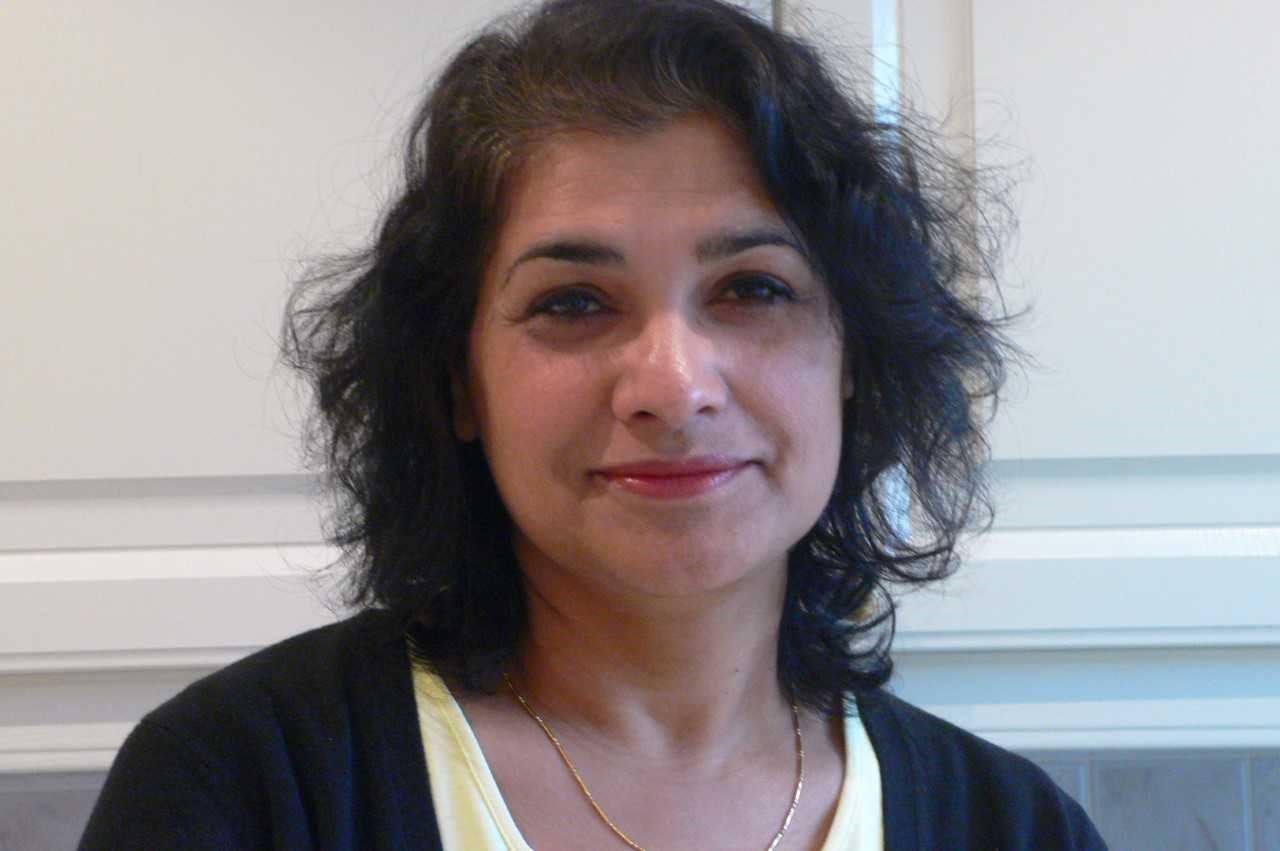 you need to know about. The general idea is that everybody needs to know about particular things to get a good job and this can depend on what skills are in demand by society at a given time. This explains why there’s been a heavy emphasis on science in recent years. On the other hand, that also means there’s often less chance for young people to study the arts, including music and drawing.
you need to know about. The general idea is that everybody needs to know about particular things to get a good job and this can depend on what skills are in demand by society at a given time. This explains why there’s been a heavy emphasis on science in recent years. On the other hand, that also means there’s often less chance for young people to study the arts, including music and drawing.
So the list of school subjects that young people have to study has changed. But that’s happened quite frequently across the years. In the Victorian era (1837-1901) -- when mass schooling as we know it today is thought to have begun -- there were very different ideas about how children should be taught and what they should learn.
“There were very young people out on the streets, and the Victorians were becoming increasingly concerned about the lack of basic knowledge for the population,” says Prof. Iram Siraj (pictured above right). “We were an information-poor society. We had very high rates of illiteracy, [and] there was no systematic way of teaching skills to people... reading and writing and so on.”
“[And so the focus of school became] about basic skills, social cohesion [i.e. learning how to behave properly and get along with each other], and creating a society where people could contribute more advanced things than they had in the past.”
Skills for life
Prof. Siraj says that it can be beneficial to give children activities to work on in teams, encouraging them to solve genuine problems and ensuring that they feel like they are really contributing to an issue, rather than simply learning things to be tested on.
There is more to school than simply learning facts, and a teacher's role is important in all of this.
Teachers do more than just tell pupils what to do, they encourage students and help them learn how to learn. For example, they can help pupils develop the skills needed to be able to weigh up how useful or accurate a piece of information is.
Plus, Prof. Siraj explains that children do better in secondary school if they’ve been shown useful social skills in primary school. One of the most vital of these is self-regulation. This is because if you can self-regulate (i.e. keep trying when something’s difficult, concentrate on what you have to do, and not lose your temper or get upset), then you’re set up to do well when it comes to school and beyond.
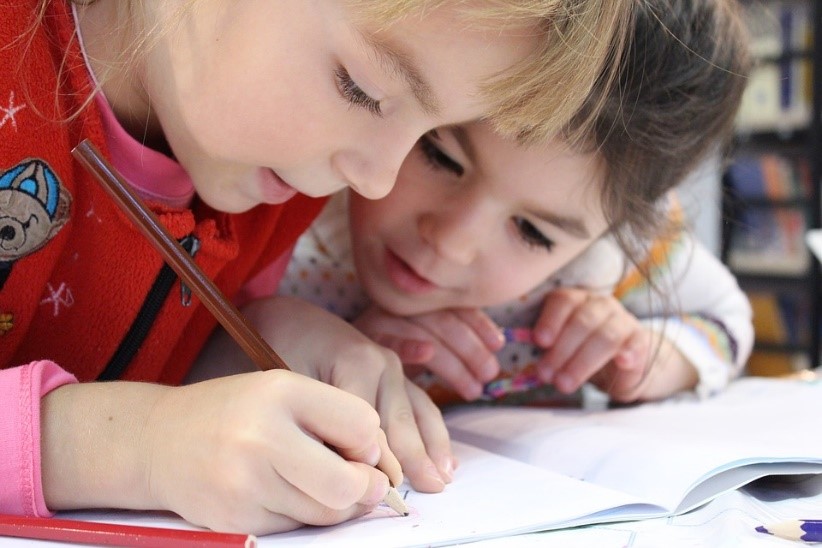
Into the future
Prof. Siraj explains that the ability to self-regulate is something that is increasingly helpful to today’s young people when they enter the workplace as it’s likely that they will be doing lots of different jobs during their lifetime.
“We have too much information,” says Prof. Siraj. “We have knowledge on the internet doubling every couple of years. The nature of schooling has become very different. It can’t just be about subjects anymore. It needs also to be about how we learn to learn, and how we can continue to learn and adapt according to what’s out there. In previous generations, people had a job and they tended to have it for life. That’s not the case anymore. You’re going to need more flexibility and multiple skills.”
Prof. Siraj thinks that many young people today are able to adapt to different situations and different tasks but she isn’t sure that schools necessarily always help them do that.
“We’re going to need a whole different level of skills -- and the world is developing rapidly,” she says. “We have children with many of these thinking skills -- but are we appreciating them in schools? I don’t know.”
So do schools need to change? Do they need to use more modern technology to help young people learn? And is learning alongside your friends distracting or brilliant and inspiring? What do you think?
What was it like to go to school in the 1800s?
Professor Siân Pooley from the Oxford History Faculty explains how today's schools are shaped by their Victorian past. She discusses what's changed since the early days of state education, and why going to school in the 1800s may not have been as scary as you might think...
Did you know?
... that football results could affect school grades? For students who sat their GCSEs in the early 2000s, the odds of achieving 5 Cs or more fell by 12% during World Cup years (source).
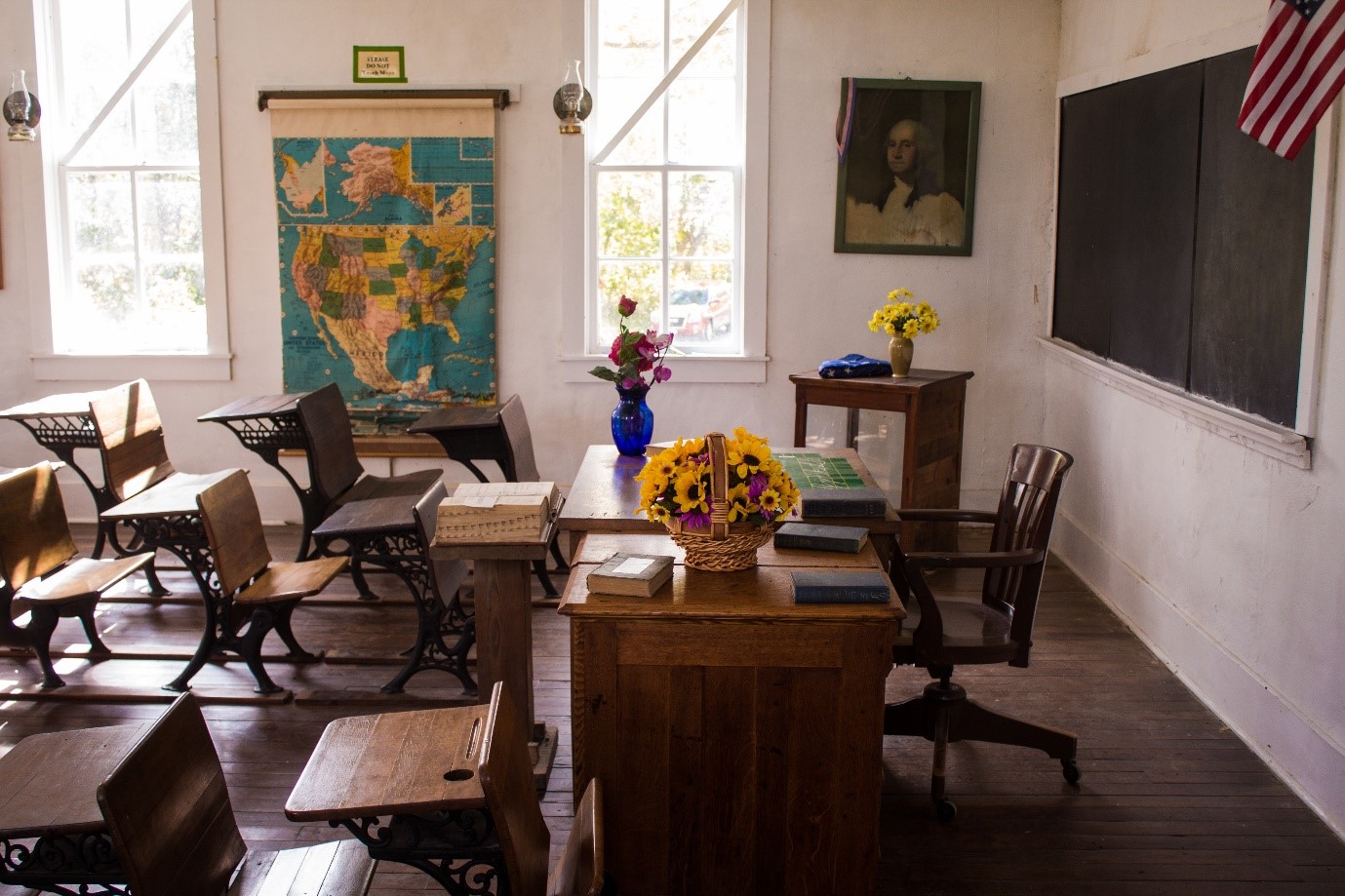
A schoolroom design from the 1900s – how could modern designs for schools change the way pupils learn?
How does the design of a school affect our experience of learning?
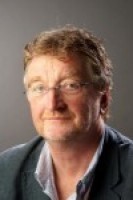

This was the question that Oxford University researchers Professor Harry Daniels and Hau Ming Tse set out to answer when they looked at the experiences of five different secondary schools which had recently created new buildings.
Their study “Design Matters? The effects of new schools on pupils’, teachers’ and parents’ actions and perceptions” looked at a number of factors, including:
- How were school buildings designed in the first place? Who had a say in things like how big the classrooms would be, or whether there would be lots of open spaces? In some schools, these decisions might be mostly up to the head teacher, but in other schools teachers, parents and even pupils might have been able to contribute too.
- What were pupils’ expectations before beginning at a new school? Did they prefer schools that were similar to the environment they’d experienced at primary school, or did they respond better to a different type of building when they were older?
- How and why were the different spaces and buildings in the school used ‘in real life’ after they had been designed and built? Did these match the expectations of the people who had planned them, or did teachers and pupils use the spaces in unexpected ways?
The researchers then put all of these findings together to try to figure out what the ‘built environment’ (the way in which the school was designed and built) said about the priorities of the school as an organisation.
To do this, they drew on the work of the Russian philosopher Lev Vygotsky, who argued that cultural artefacts (like buildings) have an effect on people’s experiences of cultural and social institutions.
What does that mean?
Let’s imagine that a shopping centre is built in a way that means you have to make a purchase at a café or restaurant to be allowed to sit down. For a person who doesn’t have much money, the shopping centre could represent a very unwelcoming place. This is because they might have to stay standing up and moving around for a long time, or choose to spend more than they can afford just to be able to sit down and rest. By contrast, a shopping centre where the architects have chosen to include free public seating as part of the design will be more welcoming, and could lead to an overall more positive experience, especially for those who might have a special need to sit down more like elderly or disabled people. That’s a very simple example, but it does show the ways in which the choices made by architects can affect people’s ability to take part in public life.
What do you think? Think about your current school, and make a list of some of the features of your school building/s. For example, are there long narrow corridors or open spaces? Does the outdoor area have seating or no seating? Are there spaces to play sports, and are they available to everyone or only some groups of pupils? How do all of these factors of the built environment affect your experience of school?
So what did the researchers find after speaking to pupils and teachers? The things they learned included:
- That the design of buildings and classroom spaces definitely does impact the experiences of pupils and staff!
- As schools change over time (for example, becoming bigger or smaller as people move to or from an area), flexibility and adaptability are key design requirements. Things like moveable walls, spaces to accommodate new technology and sports areas that can be adapted for several different sports or games can allow schools to adapt more easily to changes in the number of pupils attending or their age profile.
- Some schools had very positive experiences with large-group open-plan learning where pupils from different classes or age groups can work together at once. This lets pupils move between groups according to their needs and level of attainment, and allowed teachers to work together and move between classes too. Giving teachers training on how to make the best use of open spaces helped a lot with this!
- However, some other schools found that open-plan environments were distracting or stressful for pupils and teachers, especially if they didn’t have good soundproofing or sound-deadening material to keep the noise down! At one school, teachers even dragged bookshelves around to create makeshift ‘walls’ because the open-plan space became too noisy to use.
- In schools where the head teacher worked closely with the builders and contractors doing the actual work of putting the building together, better results were achieved at lower cost. Where there were opportunities for miscommunication about what was achievable with the budget and materials available, teachers and pupils were less likely to be happy about the end result when they came to use the building.
In the video below, researchers, teachers and pupils explain more about the importance of school design and the project's findings:
What do you think? If you were a head teacher or architect designing a new school environment, would you prefer large open spaces or self-contained classrooms? How could you design the building in a way that would make it easy to adjust and adapt for a smaller or larger school population, new technology or changes in the kinds of subjects your school offered?
Want to know more? This article is based on a video lecture from Professor Harry Daniels and Hau Ming Tse. You can watch the full video online here, or check out the “Design Matters” project website here.
What is outdoor education?
Can the forest be a classroom too? Oxplore intern Charlotte visited the Hill End Outdoor Education Centre in Oxford to find out...
Quotable:
"You won’t allow me to go to school.
I won’t become a doctor.
Remember this:
One day you will be sick."
- Lima Niazi, aged 15 from Afghanistan (source).
Is school the best place to learn a language?
Is it better to learn a language in school, or to be dropped into a new country and try to pick it up as you go along? The Oxford Faculty of Classics' Dr Robin Meyer compares the two experiences, and explains why language learning stretches your brain wherever it happens!
Top 10 best and worst fictional teachers
-
Miss Agatha Trunchbull (Matilda)
 Miss Trunchbull is the awful head teacher of Crunchem Hall, who meets her match in Roald Dahl’s small but powerful Matilda (1988). It’s not clear why Miss Trunchbull became a teacher, but it certainly wasn’t because she wanted to make school a great place to learn. In classic Roald Dahl fashion, Miss Trunchbull is larger than life. She somehow gets away with throwing children out of windows, swinging them around by their hair and locking them in a cupboard called the Chokey!
Miss Trunchbull is the awful head teacher of Crunchem Hall, who meets her match in Roald Dahl’s small but powerful Matilda (1988). It’s not clear why Miss Trunchbull became a teacher, but it certainly wasn’t because she wanted to make school a great place to learn. In classic Roald Dahl fashion, Miss Trunchbull is larger than life. She somehow gets away with throwing children out of windows, swinging them around by their hair and locking them in a cupboard called the Chokey!
''Small people should never be seen by anybody. They should be kept out of sight in boxes like hairpins and buttons. I cannot for the life of me see why children have to take so long to grow up. I think they do it on purpose.''
-
Ms Valerie Frizzle (The Magic School Bus)
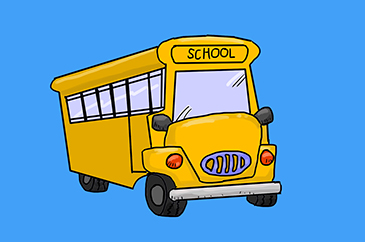 Ms Frizzle is the eccentric teacher from the books and animated TV series The Magic School Bus (1994-1997). She is a believer in the importance of play and fun in learning, using magical field trips to teach her class about science. Learning does not have to happen in the school building—Frizzle’s focus is on allowing students to engage with what they study directly. And if that means taking a trip back in time or meeting a magical creature or two, so be it! “Take chances, make mistakes, and get messy!"
Ms Frizzle is the eccentric teacher from the books and animated TV series The Magic School Bus (1994-1997). She is a believer in the importance of play and fun in learning, using magical field trips to teach her class about science. Learning does not have to happen in the school building—Frizzle’s focus is on allowing students to engage with what they study directly. And if that means taking a trip back in time or meeting a magical creature or two, so be it! “Take chances, make mistakes, and get messy!" -
Professor Severus Snape (Harry Potter series)
 Severus Snape is the slimy Potions master in J K Rowling’s Harry Potter series (1997-2007). Though there’s certainly more to Snape than meets the eye, there is no doubt he is a truly terrible teacher. He shows outrageous favouritism to students in his own school house and bullies those who struggle with his lessons. Rowling may have set her novels in a magic school, but her presentation of how school isn’t always fair is definitely relevant to our Muggle world.
Severus Snape is the slimy Potions master in J K Rowling’s Harry Potter series (1997-2007). Though there’s certainly more to Snape than meets the eye, there is no doubt he is a truly terrible teacher. He shows outrageous favouritism to students in his own school house and bullies those who struggle with his lessons. Rowling may have set her novels in a magic school, but her presentation of how school isn’t always fair is definitely relevant to our Muggle world.
"I can teach you how to bottle fame, brew glory, even stopper death -- if you aren't as big a bunch of dunderheads as I usually have to teach.”
- Harry Potter and the Philosopher's Stone (1997) -
Professor Charles Xavier (X-Men)
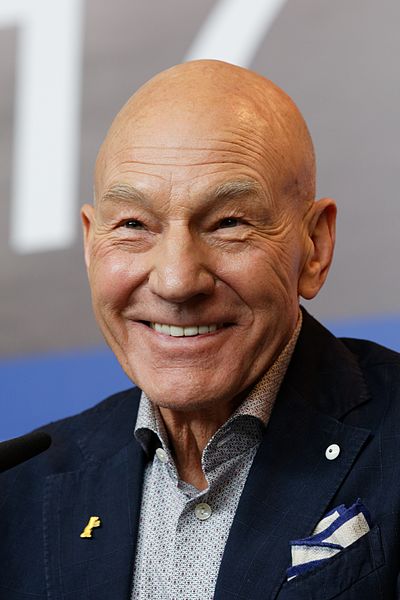 We first met the X-Men in the original comic book series (1963-1968), but many know and love them from the films (2000-present). The leader of the X-Men, Professor X, may be a superhuman mutant, but he’s also a teacher. His “School for Gifted Youngsters” is not your standard school - Professor X uses it to develop his students’ superpowers as well as teaching ‘normal’ lessons. His most important quality, however, is one which the best of ordinary teachers can have - the belief in equality and peace between those who are different from one another.
We first met the X-Men in the original comic book series (1963-1968), but many know and love them from the films (2000-present). The leader of the X-Men, Professor X, may be a superhuman mutant, but he’s also a teacher. His “School for Gifted Youngsters” is not your standard school - Professor X uses it to develop his students’ superpowers as well as teaching ‘normal’ lessons. His most important quality, however, is one which the best of ordinary teachers can have - the belief in equality and peace between those who are different from one another.
“Just because someone stumbles and loses their path, doesn't mean they're lost forever.”
Image credit: Maximilian Bühn, CC-BY-SA 4.0
-
Mr Wackford Squeers (Nicholas Nickleby)
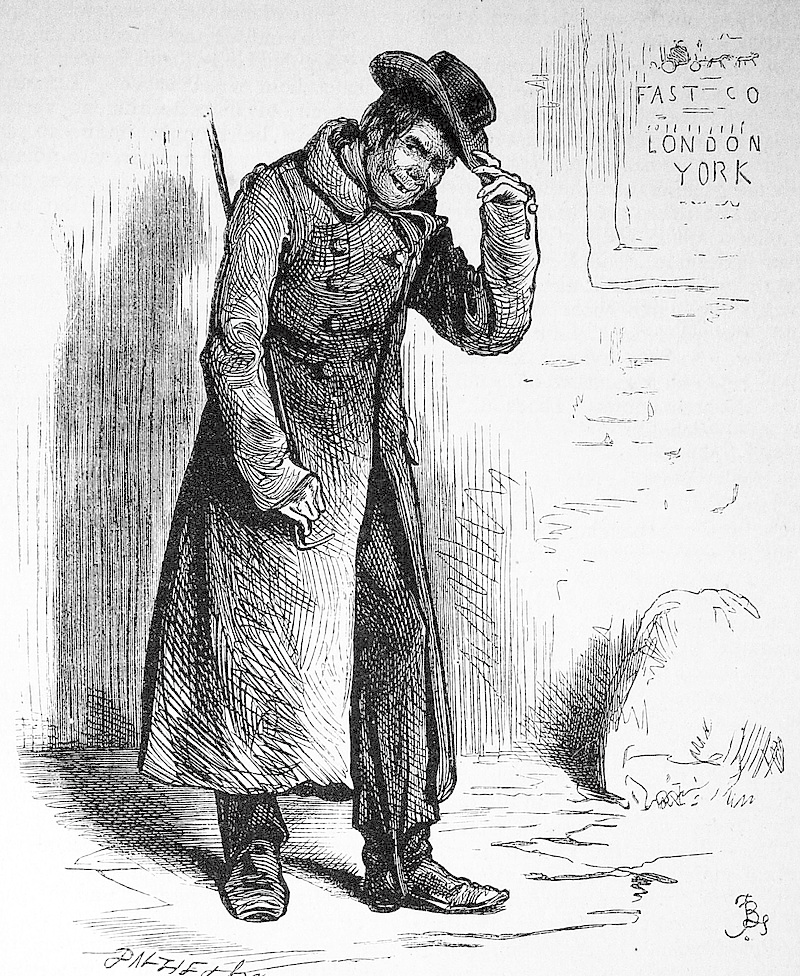 Wackford Squeers is an incredibly cruel teacher created by Charles Dickens in his novel Nicholas Nickleby (1838) - and in true Dickens fashion, even Wackford’s name suggests the terrible treatment he gives to his students! He is the headmaster of Dotheboys Hall, where the boys are beaten, starved and taught very little at all. Many people think Dickens based Squeers on a real person, so perhaps Dotheboys Hall was not far from the reality of some Victorian boarding schools!
Wackford Squeers is an incredibly cruel teacher created by Charles Dickens in his novel Nicholas Nickleby (1838) - and in true Dickens fashion, even Wackford’s name suggests the terrible treatment he gives to his students! He is the headmaster of Dotheboys Hall, where the boys are beaten, starved and taught very little at all. Many people think Dickens based Squeers on a real person, so perhaps Dotheboys Hall was not far from the reality of some Victorian boarding schools!
“Mr. Squeers looked at the little boy to see whether he was doing anything he could beat him for. As he happened not to be doing anything at all, he merely boxed his ears, and told him not to do it again.”
Did you know? You can read all of Nicholas Nickleby -- and a huge range of texts from this period and others -- completely for free online through Project Gutenberg.
-
Mr Rick Braithwaite (To Sir, With Love)
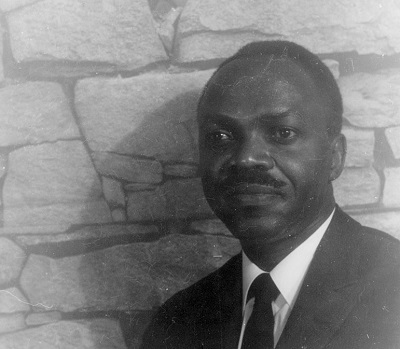 Fictionalised teacher, Mr Braithwaite is based on real-life author E R Braithwaite (left). Braithwaite was very well-educated and had fought in the Air Force during World War Two -- yet, being a Black man, he was not able to be hired as an engineer once the war was over. His novel To Sir, With Love (1959) is about his experiences working as a teacher in a London East End school instead. The fictional Mr Braithwaite believes students and teachers alike should treat each other with respect. He also shows his class that all learning does not have to take place in school -- the museum trips he takes with his students open their eyes to new ideas. Another theme of the novel, given the reason Braithwaite had to become a teacher, is racial inequality. What do you think -- is school a good place to learn about the inequalities that exist in today’s world?
Fictionalised teacher, Mr Braithwaite is based on real-life author E R Braithwaite (left). Braithwaite was very well-educated and had fought in the Air Force during World War Two -- yet, being a Black man, he was not able to be hired as an engineer once the war was over. His novel To Sir, With Love (1959) is about his experiences working as a teacher in a London East End school instead. The fictional Mr Braithwaite believes students and teachers alike should treat each other with respect. He also shows his class that all learning does not have to take place in school -- the museum trips he takes with his students open their eyes to new ideas. Another theme of the novel, given the reason Braithwaite had to become a teacher, is racial inequality. What do you think -- is school a good place to learn about the inequalities that exist in today’s world?
“Most of you will be leaving school within six months or so; that means that in a short while you will be embarked on the very adult business of earning a living. Bearing that in mind, I have decided that from now on you will be treated, not as children, but as young men and women, by me and by each other.”
-
Mr Brocklehurst (Jane Eyre)
 Mr Brocklehurst is the supervisor of the horrible Lowood School in Charlotte Brontë’s novel Jane Eyre (1847). He neglects and humiliates Jane and the other pupils -- all in the name of saving them from Hell! Some think that Brontë based Lowood on a school where her sister had died due to its terrible conditions. Mr Brocklehurst therefore may represent the ways in which nineteenth-century school could be a bad place to learn indeed, especially if you were poor -- or a girl. What do you think -- did Brontë and Dickens both base their terrible teachers on real-life people?
Mr Brocklehurst is the supervisor of the horrible Lowood School in Charlotte Brontë’s novel Jane Eyre (1847). He neglects and humiliates Jane and the other pupils -- all in the name of saving them from Hell! Some think that Brontë based Lowood on a school where her sister had died due to its terrible conditions. Mr Brocklehurst therefore may represent the ways in which nineteenth-century school could be a bad place to learn indeed, especially if you were poor -- or a girl. What do you think -- did Brontë and Dickens both base their terrible teachers on real-life people?
“When you put bread and cheese, instead of burnt porridge into these children's mouths, you may indeed feed their vile bodies, but you little think how you starve their immortal souls!"
Did you know? Just like with Nicholas Nickleby, you can read all of Jane Eyre completely for free online through Project Gutenberg!
Image credit: Keith Rowley, "Porridge", CC BY-SA 2.0
-
Professor Digory Kirke (The Lion, The Witch and the Wardrobe)
 Professor Kirke is the kindly guardian of the Pevensie children and owner of the magical wardrobe in C. S. Lewis’s classic The Chronicles of Narnia series (1950-1956). Some believe him to be based on Lewis’s own beloved tutor, Professor William Kirkpatrick. Professor Kirke might not the Pevensies’ teacher in this traditional sense, but he certainly teaches them something: the importance of logic, and of believing in the ‘impossible’…
Professor Kirke is the kindly guardian of the Pevensie children and owner of the magical wardrobe in C. S. Lewis’s classic The Chronicles of Narnia series (1950-1956). Some believe him to be based on Lewis’s own beloved tutor, Professor William Kirkpatrick. Professor Kirke might not the Pevensies’ teacher in this traditional sense, but he certainly teaches them something: the importance of logic, and of believing in the ‘impossible’…
“Logic!" said the Professor half to himself. "Why don't they teach logic at these schools? There are only three possibilities. Either your sister is telling lies, or she is mad, or she is telling the truth. You know she doesn't tell lies and it is obvious that she is not mad. For the moment then and unless any further evidence turns up, we must assume that she is telling the truth.”
Image credit: "Narnia, Tring" by Rob Farrow, CC BY-SA 2.0
-
Ms Edna Krabappel (The Simpsons)
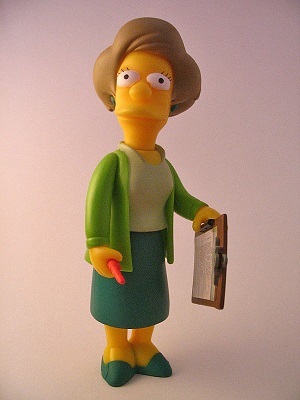 Edna Krabappel is the unfortunate teacher of Bart Simpson in the classic TV series The Simpsons (1989-present). She certainly qualifies as one of TV’s worst teachers—she smokes, drinks, and even gets into fights with students and other teachers. Perhaps she is not entirely to blame though—she once had a real wish to help students, but years of teaching ones like Bart seem to have worn her down!
Edna Krabappel is the unfortunate teacher of Bart Simpson in the classic TV series The Simpsons (1989-present). She certainly qualifies as one of TV’s worst teachers—she smokes, drinks, and even gets into fights with students and other teachers. Perhaps she is not entirely to blame though—she once had a real wish to help students, but years of teaching ones like Bart seem to have worn her down!
“No matter what you've done, I always thought there was a spark of decency in you, Bart Simpson, but I was wrong. I never thought I'd say this to a child, but you are bad on the inside.”
Image credit: Francis Bijl, "The Simpsons: Edna Krabappel", CC BY 2.0
-
Chiron (Percy Jackson series)
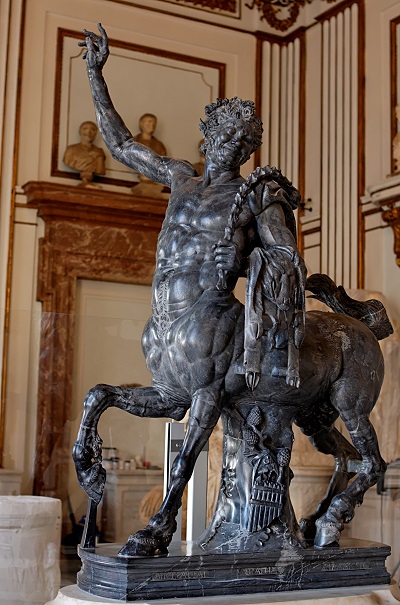 Chiron is not your average teacher—he’s an immortal centaur whose previous job was teaching Greek heroes like Achilles and Hercules! He’s now the activities director of Camp Half-Blood, the summer camp for demi-gods created by Rick Riordan in his Percy Jackson series (2005-2009). He trains Percy, Annabeth and others for the quests that, if you’re the child of a god, are sure to come. Chiron also shows much wisdom and kindness, acting as a father as well as a teacher for many of the characters.
Chiron is not your average teacher—he’s an immortal centaur whose previous job was teaching Greek heroes like Achilles and Hercules! He’s now the activities director of Camp Half-Blood, the summer camp for demi-gods created by Rick Riordan in his Percy Jackson series (2005-2009). He trains Percy, Annabeth and others for the quests that, if you’re the child of a god, are sure to come. Chiron also shows much wisdom and kindness, acting as a father as well as a teacher for many of the characters.
“You'll do well, Percy. Just remember your strengths and beware your weaknesses.”
What could school look like in the future?
The technology of learning has changed a lot over the years. But the internet and other now-familiar technologies were not the first new inventions to cause a stir in the classroom. When typewriters were first introduced in the 1930s, researchers studied the impact of this “new technology” on students. They were concerned about how children might react and how it could affect their writing ability.
Technology now is changing even faster than in the 1930s and as schools use these new inventions more and more we ask: What could school look like in the future? The main technologies that many experts believe will impact education are Virtual Reality (VR) and Artificial Intelligence.
Learning through Virtual Reality
VR is a simulated experience that can reflect the real world around you or be completely different. Think of it as being able to take a walk around your favourite video game.
Often confused with VR, Augmented Reality (AR) is a similar style of technology, adding a layer of virtual components such as digital images or sensations to interactions with the real world. For example, Snapchat and Instagram filters are both types of Augmented Reality. Click here to find out more about the differences between VR and AR.
VR techniques are already being implemented in some classrooms in the UK. Learning technologists from the University of Oxford used ClassVR headsets to help students from a school in Oxfordshire learn about the First and Second World Wars. Specifically, VR was used to help students understand the experiences of soldiers living in the trenches and show the reality of historical events. Click here to read more about this case study. Could VR field trips be something we see more of in the future? Do you think you would enjoy one?
Experts have found that VR headsets can improve learning ability and how students feel in the classroom. Research led by the University of Warwick has compared textbook-based, video, and VR learning in a biology classroom (Allcoat and von Mühlenen, 2018). The research found that it’s not the visuals and graphics of VR that helps learning, but the ability to interact with the environment. In addition, the students felt more positively about their learning experience compared with traditional textbook or video learning. With these sorts of results, we might see more VR in our classrooms in the future.
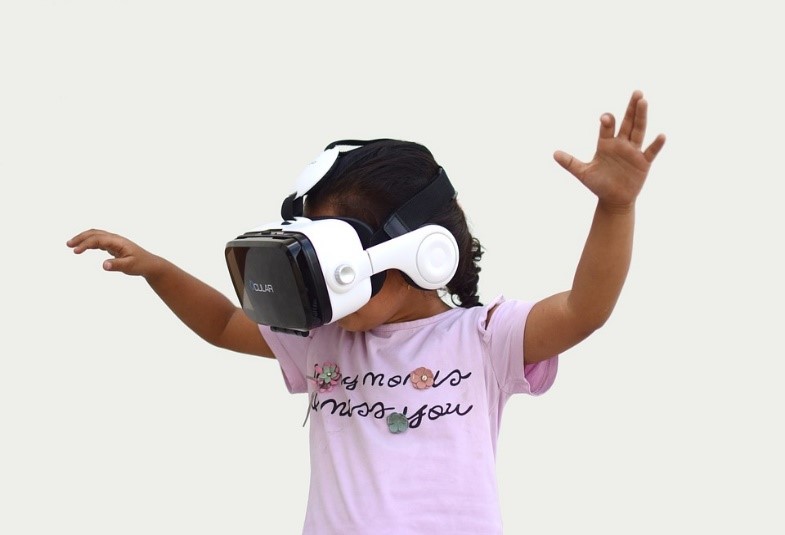
Beyond the traditional classroom setting, VR is already being used for a variety of other educational purposes. The Life-Saving Instruction for Emergencies (LIFE) is a healthcare-focused programme that uses VR to educate healthcare workers in developing countries on resuscitation techniques for babies and children.
VR technology has applications in lifelong learning too -- particularly with the development of vocational skills, such as technical training for work in the trades. These programs generally focus on providing students with hands-on instruction. For example, the car manufacturer Volkswagen have been using VR to train their mechanics on how to service and repair their products.
However, according to recent research, technology is not the effortless solution to education-based problems it's sometimes portrayed to be. Focusing on providing schools with hardware such as laptops or VR headsets is not always the best approach to improving education and making schools more effective. For example, not all schools can afford this technology and if they spend their budget on such tools, then it's likely that only a few students can use them at one time. Plus, if several schools can't afford them, especially in poorer areas, then the regional learning gap may increase. Studies have shown that for an educational technology to be effective in schools, the strategy for introducing it has to take into account the uniqueness of any given setting. In other words, it needs to appeal to the different needs and wants of the users (i.e. students, teachers etc.).
Artificial Intelligence in Education
There are many different definitions of Artificial Intelligence (AI), but broadly it describes a computer system designed to “think” intelligently like humans. AI already has many uses, from searching online with websites such as Google, to adverts on Social Media, to predicting and treating diseases. Similar to how many people felt about the Internet and online-learning coming to classrooms in the mid-2000s, the idea of using AI in classrooms concerns many researchers and parents alike.
How your AI teacher learns
How artificial intelligence works is pretty simple. AI systems are first shown patterns and information from data provided by human programmers. Following this, they then learn through their own experiences without being told what to do. The more layers of learning and programming that are involved, the ‘deeper’ the learning. Much like people, AI learns to make good guesses from being told what a good answer looks like and what a bad answer looks like. In fact, some AI deep learning techniques, called ‘neural networks’, are even built to work like the human brain!
You might not be able to believe it now but virtual assistants like Amazon’s Alexa or Apple’s Siri could soon be helping us learn in our classrooms. This is because AI works by comparing information it is given by the student with a huge volume of preloaded datasets. And so it could, in theory, be used to mark students’ work. Some companies are even looking to use AI to teach and tutor students when they're struggling at home with homework and preparation for tests (content that their parents may not be able to help with). But many researchers believe that AI will not replace teachers as their roles of care-taking and looking after students are so important in schools.
The problem of AI
Across applications of AI, there is much discussion on how it can be used well and in a way where it benefits everyone. In talking about AI, many use the term “algorithmic accountability”. Whilst this sounds complex, what it means is: Who is held responsible for the results of a computer programme? Since AI is made by humans, it can have biases and mistakes programmed into it that can have big consequences. For example, imagine if a self-driving car has to swerve to avoid running over Animal A in the road. Would it still make the decision to swerve if there is another animal, Animal B, on the pavement that might be injured? What decision should the computer programme in the car make? Researchers at Oxford are leading a project on understanding how AI works and making sure it works for everyone (source).
Because AI learns, it changes how it understands what is the right or correct action to take in a given situation. If we decide to bring AI into the classroom, researchers and politicians need to think about what effects it might have. The FutureMakers podcast features academic debating on the problems of Article Intelligence in different areas of society.